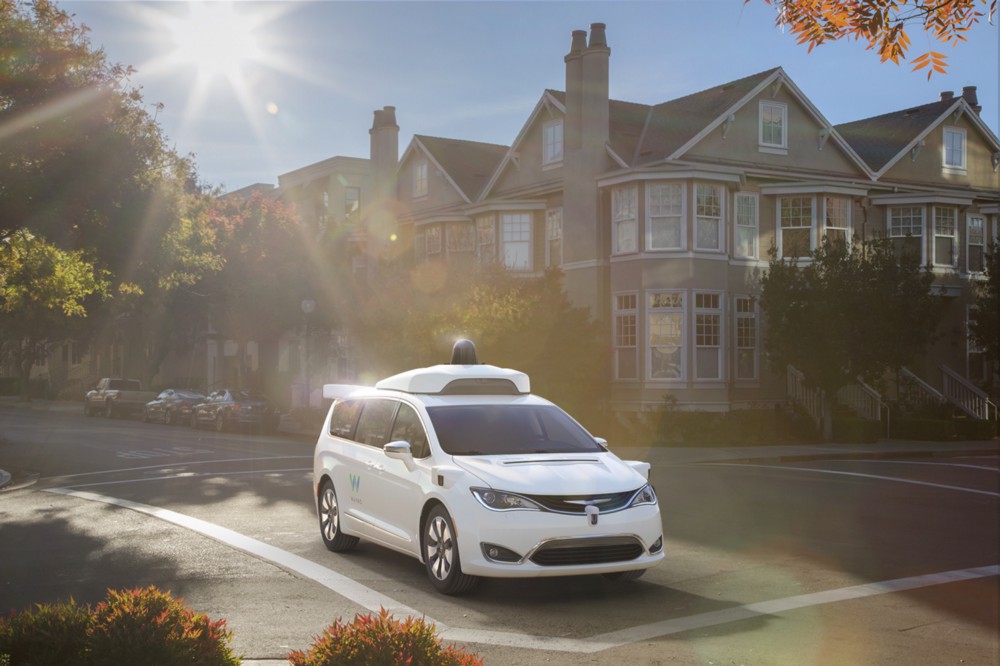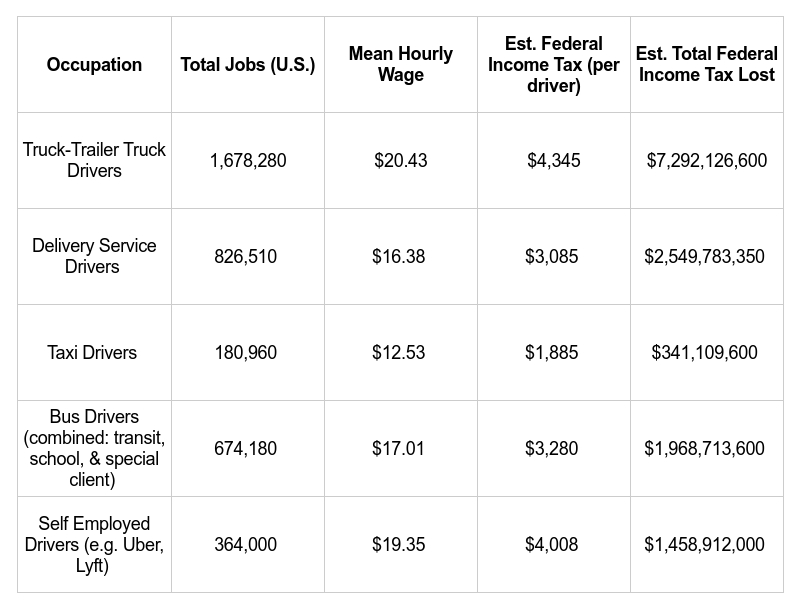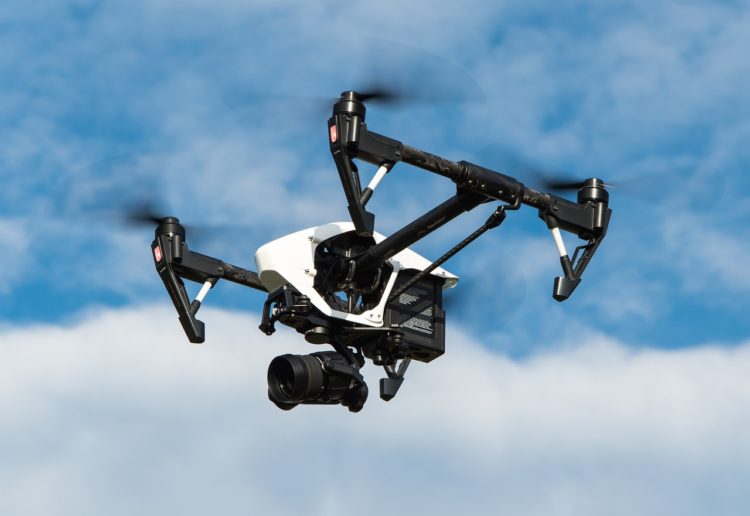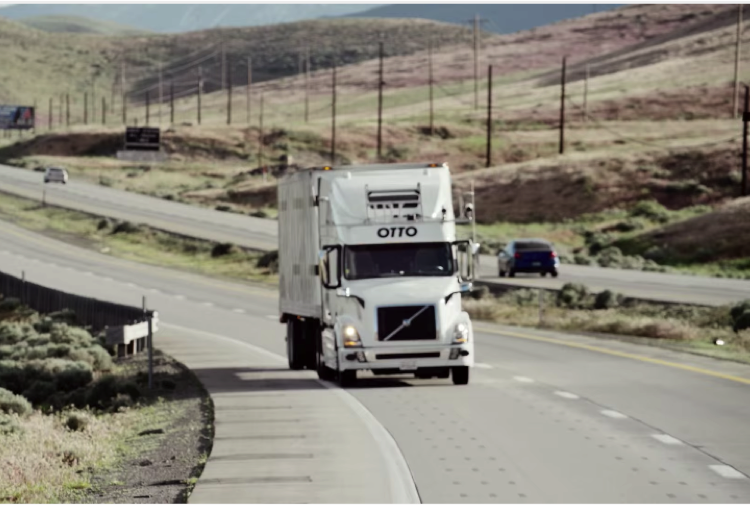April 14, 2017
 Recent leaps forward in automation – including self-driving cars, delivery drones, artificial intelligence, and other technologies – are casting an increased focus on the potential impacts of future technology on the workforce.
Recent leaps forward in automation – including self-driving cars, delivery drones, artificial intelligence, and other technologies – are casting an increased focus on the potential impacts of future technology on the workforce.
The ramifications for the transportation sector are expected to be significant. A White House report released in late 2016, titled Artificial Intelligence, Automation, and the Economy, examines the implications of automation for the US workforce. The report highlighted automated vehicles as a primary example of how automation could result in potential job loss – in this case, possibly displacing an estimated 3.7 million drivers of trucks, taxis, and buses.
Historically, technological advances have always been a factor in economic disruption (e.g., cars replacing horse and buggies), and subsequent industries pop up around them to replace these lost jobs (e.g., mechanics, car washes). But this may not be much consolation for those who believe their job may disappear in a decade – maybe sooner.
This inspired Bill Gates to propose a “robot tax” in a recent interview. Effectively, this would levy a tax on companies for every robot (or automated system) they use to replace a human worker, whether in a factory, a mine, or on the roadway. He posits that automation will gradually cause the government to miss out on income tax that would otherwise be assessed to human workers, even as companies continue to perform the same functions.
The table below suggests that the lost federal income taxes triggered by job displacement in occupations vulnerable to automation could be over $13 billion annually.
Gates argues that taxing companies’ use of automated services could temporarily slow the spread of automation to a socially-manageable pace and, at the same time, fund programs that would counterbalance job losses due to automation. The revenue could help fund training and incentive structures for people in occupations that are less vulnerable to automation – including those that inherently require inherently human qualities like empathy, creativity, and understanding (e.g. teaching, fine arts, working with elderly or special needs children).
In the aftermath of the 2016 presidential election, where the health of the economy and American jobs were the major issues, a robot tax could prove to be a viable solution. A gubernatorial candidate in Virginia this year, Tom Perriello, has already expressed interest in levying such a charge. Tennessee recently enacted a law that will establish a one-penny-per-mile tax on autonomous vehicles. In Massachusetts, two state legislators proposed legislation that would impose a 2.5 cent per mile tax on AVs that would increase when there are no passengers present – and furthermore, would also require all AVs to be electric in order to offset the environmental impact of potential increases in vehicle miles travelled.
Another early example of automation’s potential disruption to the workforce is automated delivery drones and robots. For example, Starship Technologies is deploying automated sidewalk delivery machines that, at scale, could optimize last-mile deliveries in urban areas and drastically reduce the cost of transport. Since the company has set its sights on a goal of $1/per delivery, it may eventually prove difficult for human delivery drivers to compete.
However, there are considerable downsides to instituting such a charge, as a robot tax could hamper innovation and slow economic growth by discouraging the deployment of innovative new technologies.
Last year, European Union lawmakers considered incorporating a robot tax in their controversial resolution to regulate the development of artificial intelligence. Although the resolution passed, legislators ultimately voted against setting a “robot tax” component as opponents of the EU’s robot tax proposal argued that a tax would have a negative impact on competitiveness and employment.
Organizations like the International Federation of Robotics, an advocacy group for the robotics industry, argued that there is a significant correlation between robot density and employment. They highlighted the German car industry as a model for the positive effects of automation, suggesting that the increased use of robots has actually created new jobs thanks to increased productivity.
If emerging technologies like autonomous vehicles and drones do revolutionize the transportation industry and reduce the need for human workers, the authors of the White House report contend that the federal government would be forced to respond. This response would include providing services like “job search assistance, education, training and apprenticeships to build and certify new skills, and wage insurance” to ensure that displaced drivers could find a comparable source of income.
In this case, Congress and state governments would need to identify funding for programs that address human displacement and job retraining. Some legislators may look to a “robot tax” as the solution. These initiatives could appear in forms both explicit and implicit – such as an explicitly stated tax per displaced human or, alternatively, a VMT charge on autonomous vehicles that diverts funds to a variety of causes (e.g., infrastructure and job retraining).

A robot tax will not be a silver bullet. Assuming a robot tax is in effect when mass layoffs are triggered by automation, the federal government would still need time to collect the revenue that would then be used to fund and administer retraining programs. Even then, retraining programs can take months or years to complete – and workers will still need to find a new job afterwards.
There may be valuable lessons to be learned in the implementation of Trade Adjustment Assistance (TAA), a decades-old federal program that retrains workers whose jobs were moved overseas. Even after completing their retraining programs, TAA beneficiaries can have difficulty finding new jobs with comparable wages. This speaks to the difficulty of creating federal initiatives to mitigate market forces – the government may not be any better at predicting the jobs of the future than workers themselves.
Nonetheless, if a tax is ever instituted, it must be both measured and proportional to the true negative impacts of automation on society. Technological advances have reduced safety risks and boosted productivity across the entire workforce – and human progress would have been severely hampered if our ancestors had prohibitively taxed machines like the printing press and the steam engine in fear of realigning their workforces to prepare for the future.

 Recent leaps forward in automation – including self-driving cars, delivery drones, artificial intelligence, and other technologies – are casting an increased focus on the potential impacts of future technology on the workforce.
Recent leaps forward in automation – including self-driving cars, delivery drones, artificial intelligence, and other technologies – are casting an increased focus on the potential impacts of future technology on the workforce.




